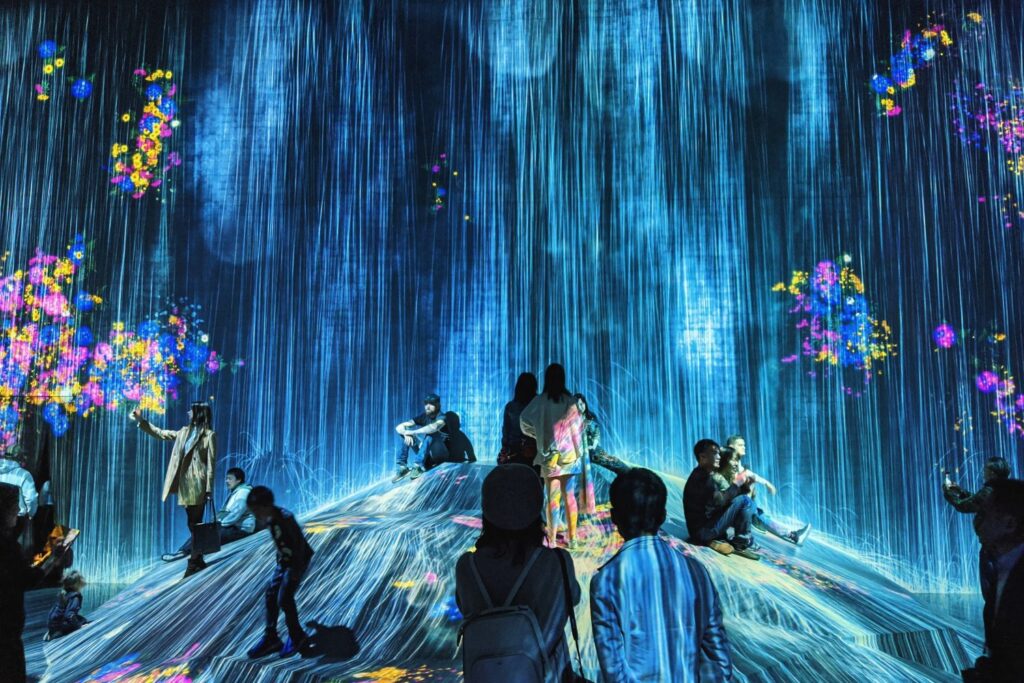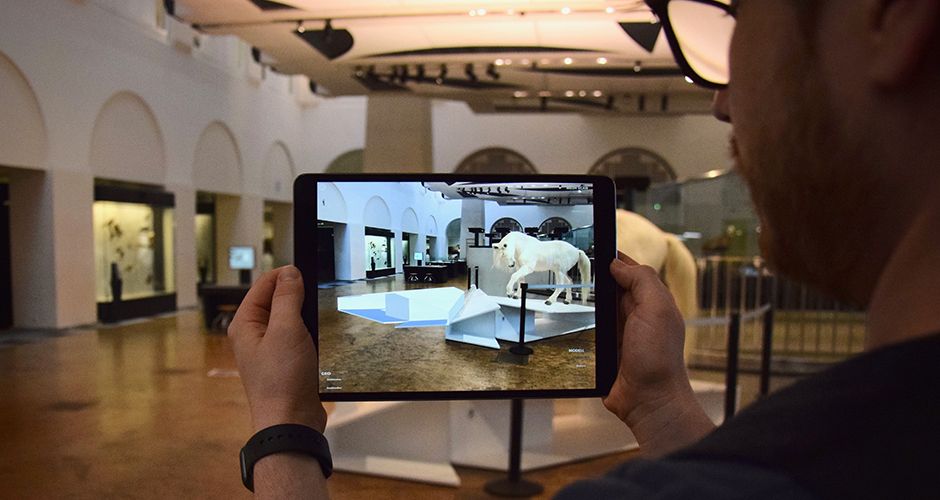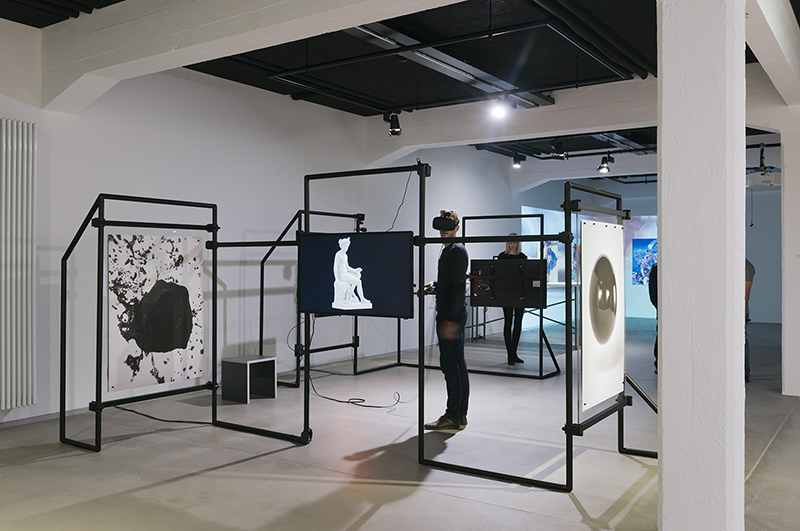🏛 枯燥乏味的事實複述很少能長時間吸引人們的想像力。
這就是為什麼當今的博物館注重互動體驗,使學習變得更加有趣和令人興奮。
請繼續閱讀以了解什麼是 互動博物館、舉辦展覽的想法以及讓展覽精彩紛呈的技巧。
目錄
Overview
| 互動博物館是誰發明的? | 杰弗裡·肖 |
| 全球著名的 5 間互動博物館是? | 紐約 SPYSCAPE、新加坡藝術科學博物館、法國太空城、維也納音樂廳、新加坡國家博物館。 |
什麼是互動博物館?
傳統展覽展示的是有趣的展品,而互動展覽則能讓您親身體驗。您不再只是被動的旁觀者,而是積極探索新理念的參與者。
互動博物館展品的策展人不是簡單地展示文物,而是設計互動活動,使物品栩栩如生。
他們使用觸摸屏、模擬和虛擬現實等技術來提供背景並講述物體背後的故事。
互動展覽調動多種感官-您可以看到、聽到、觸摸,甚至聞到和嚐到體驗的各個部分。
透過抓住物體,你就能抓住它——無論是字面上還是比喻上。這種意義非凡、身臨其境的互動創造了一種永生難忘的體驗。
有效舉辦互動博物館展覽的技巧

建立一個互動博物館需要做一些工作,但從長遠來看肯定會有回報。 為了確保您掌握其中的精髓,請使用以下 10 個提示作為博物館展覽的實用想法👇
1 – 親自動手。 參觀者想要觸摸和操縱物體,而不僅僅是觀看它們。 提供他們可以進行身體接觸的互動元素。
2——講一個故事。 將文物與更大的敘事聯繫起來,讓參觀者可以陷入其中並想像自己是其中的一部分。 使其具有相關性和吸引力。
3 – 使用多媒體。 將音訊、視訊、動畫和圖形與實體元素結合,以吸引遊客的感官並最大限度地提高學習效果。
4 – 使其社交化。 專為小組協作和討論而設計。 通過共同發現,學習變得更加豐富、更加難忘。
5 – 提供背景資訊。 向參觀者介紹文物的背景—它們是什麼、何時、何地、如何以及為什麼重要。沒有背景,文物就毫無意義。
6 – 限製文字。 使用過多的文字,訪問者會成為被動的讀者,而不是主動的探索者。 保持文本簡潔,並用視覺效果和交互進行補充。
7——設定明確的目標。 確定您希望訪客留下的關鍵主題、信息和要點。 然後圍繞實現該目標設計展覽。
8 – 測試並迭代。 從測試觀眾那裡獲得回饋,並根據互動元素對實現展覽學習目標的幫助程度來修改/改進互動元素。
9. 讓它具有挑戰性。 適度的難度可以激勵訪客堅持下去,拓展思維。但不要讓難度令人沮喪。
10 – 允許發現。 給遊客一些自由,讓他們按照自己的方式進行探索,而不是遵循線性的、規定的路徑。
總體目標是讓參觀者以令人難忘且有意義的方式積極參與探索您的展品——運用互動、敘事、多媒體和情境。與目標受眾一起測試原型,並根據回饋進行改進,將有助於確保您的最終互動展品真正栩栩如生地呈現在參觀者面前✨
互動博物館的想法
#1. 增強現實(AR)

增強現實體驗讓您的展品變得栩栩如生,並以意想不到的有趣方式分享信息。
嘗試使用可旋轉的互動式多點觸控螢幕來顯示有關互動式博物館的不同角度和額外的數位資訊圖層 - 或一瞥其過去。
參觀者可以自己旋轉屏幕並與屏幕互動,邊走邊發現更多的背景和深度。
#2. 虛擬現實

你是否曾夢想探索現實生活中可能永遠無法到達的地方?虛擬實境展覽,讓你的夢想成真。
想近距離接觸暴龍嗎?想感受月球漫步的刺激嗎?現在,你不用離開博物館就能實現。
VR 能夠將抽象化為具體,將想像化為現實。這就是這項技術的力量所在,它能夠以完全沉浸式的方式,轉移人們的思維,創造記憶,這是傳統展覽無法比擬的。
#3。 多點觸控展示櫃

互動展覽設計是成功博物館最重要的組成部分之一。在確保展品安全的同時,又能讓人們互動,這需要平衡——而合適的展櫃可以達到這一平衡。
參觀者可以透過觸摸玻璃進行互動——旋轉轉盤、放大細節、調出更多資訊——無需接觸實際的文物。
展示櫃成為人與物品之間的界面,在促進互動的同時保護他們。
合適的照明、高分辨率屏幕和交互功能將簡單的展示櫃轉變為身臨其境的體驗。
參觀者可以透過觸覺、視覺和聽覺來了解更多有關展品的資訊 - 同時展品本身仍保持安全。
#4。 互動牆

一面空白的牆壁蘊藏著無限的可能性——如果你知道如何用正確的想法來填充它。
簡單的觸摸可以揭示隱藏的資訊層,觸發動畫,或將參觀者帶入與展覽的使命和價值密切相關的虛擬環境。
互動牆將高科技、低摩擦介質和展覽設計相結合,將概念帶入生活,吸引、激勵觀眾,並在觀眾離開後很長一段時間內仍對他們留下深刻的印象。
#5。 多點觸控旋轉屏

只需簡單地旋轉手指,您就可以回到原來的世界。 法國巴士底日 以令人驚嘆的 1789 度全景視角即時呈現 360 年或史前時代的景象。
多點觸控旋轉螢幕的旋轉顯示滿足了人們導航、控制和重塑周圍環境的內在願望——並且在此過程中真正掌握您想要傳達的內容。
傳統博物館和互動博物館的區別
傳統博物館和互動博物館之間存在一些關鍵區別:
• 展覽-傳統博物館常採用靜態展覽,被動地展示展品供參觀者觀賞。互動式博物館融合了動手展覽、模擬、多媒體和互動技術,讓參觀者能夠主動參與其中。
• 學習-互動博物館旨在透過沉浸式體驗促進體驗式學習。傳統博物館通常更依賴講解和單向資訊傳遞。
• 參觀者角色-在傳統博物館中,參觀者通常扮演被動的角色,只是旁觀者或讀者。而在互動博物館中,參觀者則成為展覽的積極參與者,並在建構自身學習體驗方面發揮更自主的作用。
• 互動性-顯然,互動博物館透過觸控螢幕、模擬、遊戲等元素,在展品中融入了更高程度的互動性。傳統博物館的互動性往往較低,更依賴靜態物件進行觀賞。
• 目標-傳統博物館的目標往往是保存和分享文化遺產與知識。互動式博物館的目標不僅是分享知識,更是透過沉浸式體驗促進遊客參與、體驗式學習,甚至轉變。
• 體驗-互動式博物館致力於為遊客提供寓教於樂、令人難忘且引人入勝的體驗。傳統博物館往往更著重於教育層面。
博物館如何更具互動性?
使博物館更具互動性有一些關鍵要素:
• 使用觸摸屏和互動展品:安裝多媒體互動站、觸摸屏和動手活動,讓參觀者主動參與內容,而不僅僅是被動地觀看靜態展示。 這使得這次經歷更加難忘和具有教育意義。
• 結合模擬和遊戲:提供模擬、虛擬現實體驗和 教育遊戲 與您的收藏相關,讓參觀者可以嘗試、做出選擇並查看結果。 這使得抽象概念和歷史事件變得更加具體和相關。
• 為小組設計:創建鼓勵參觀者通過討論、協作和交互元素的共享控制來共同探索和發現事物的展覽。 社交學習可以增強體驗。
• 提供上下文信息:使用文本、時間線、視頻、音頻和交互式時間線提供展品的充分背景,以便參觀者對他們所看到和經歷的內容有豐富的框架背景。 沒有上下文,交互就失去了意義。
互動博物館展覽的重要性
互動式博物館展覽通過以下方式改變遊客體驗:
• 通過動手互動促進更有效的學習。
• 通過身臨其境的模擬激發好奇心、奇蹟和創造力。
• 利用新興技術創造超越靜態顯示本身的新體驗。
投資訊息
互動博物館擁抱 互動活動、實踐體驗和多媒體,積極吸引遊客並促進更具影響力、難忘和變革性的體驗。 當與豐富的背景故事相結合時,其結果將是深刻而難忘的學習。









